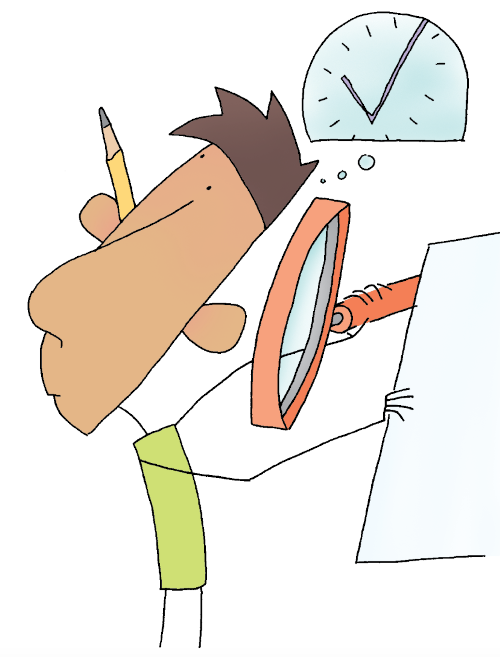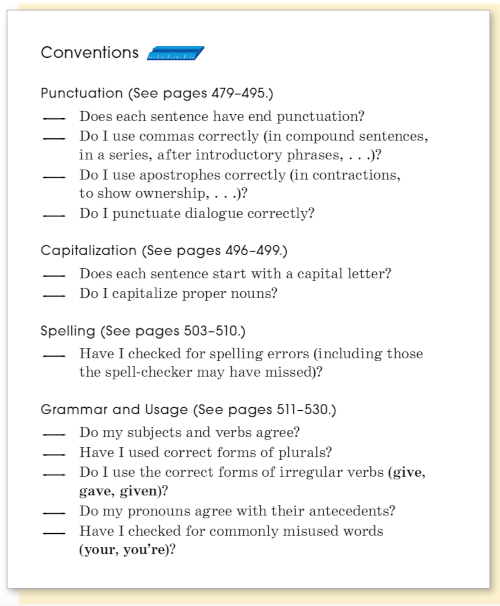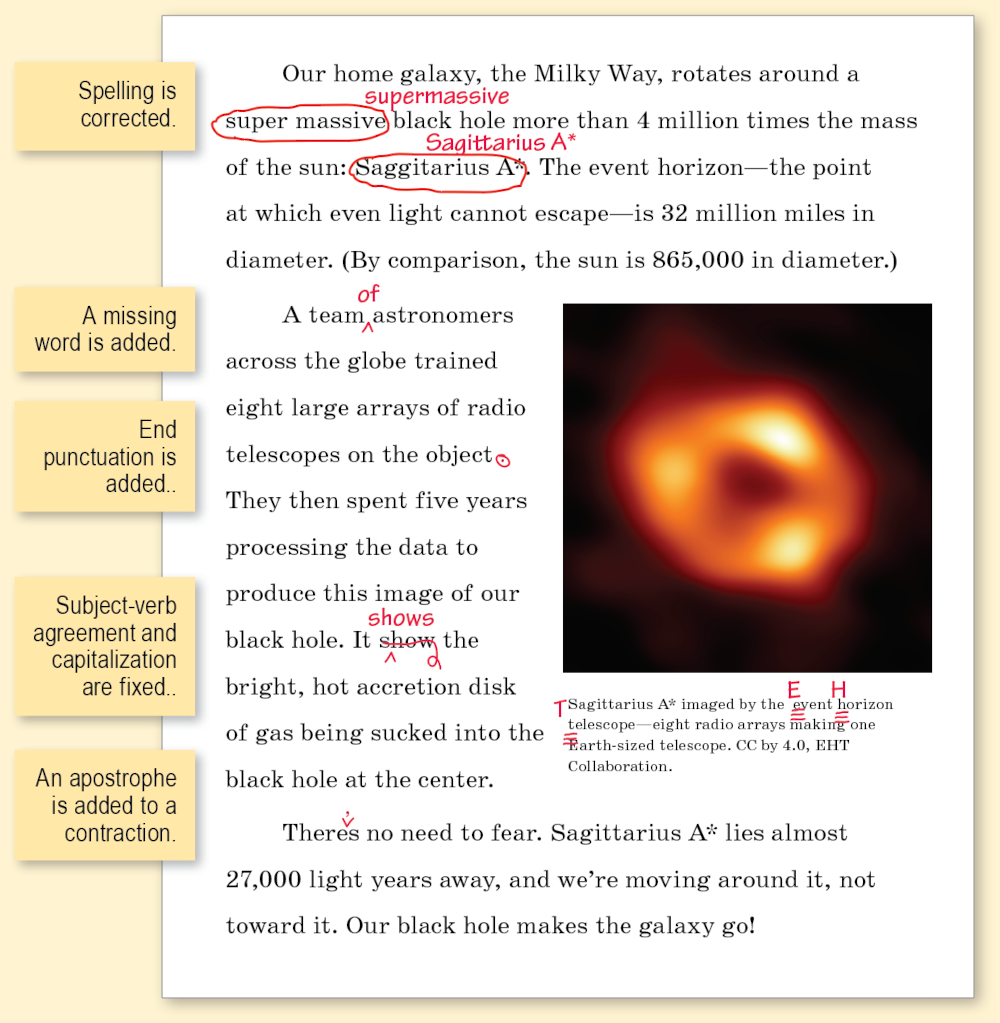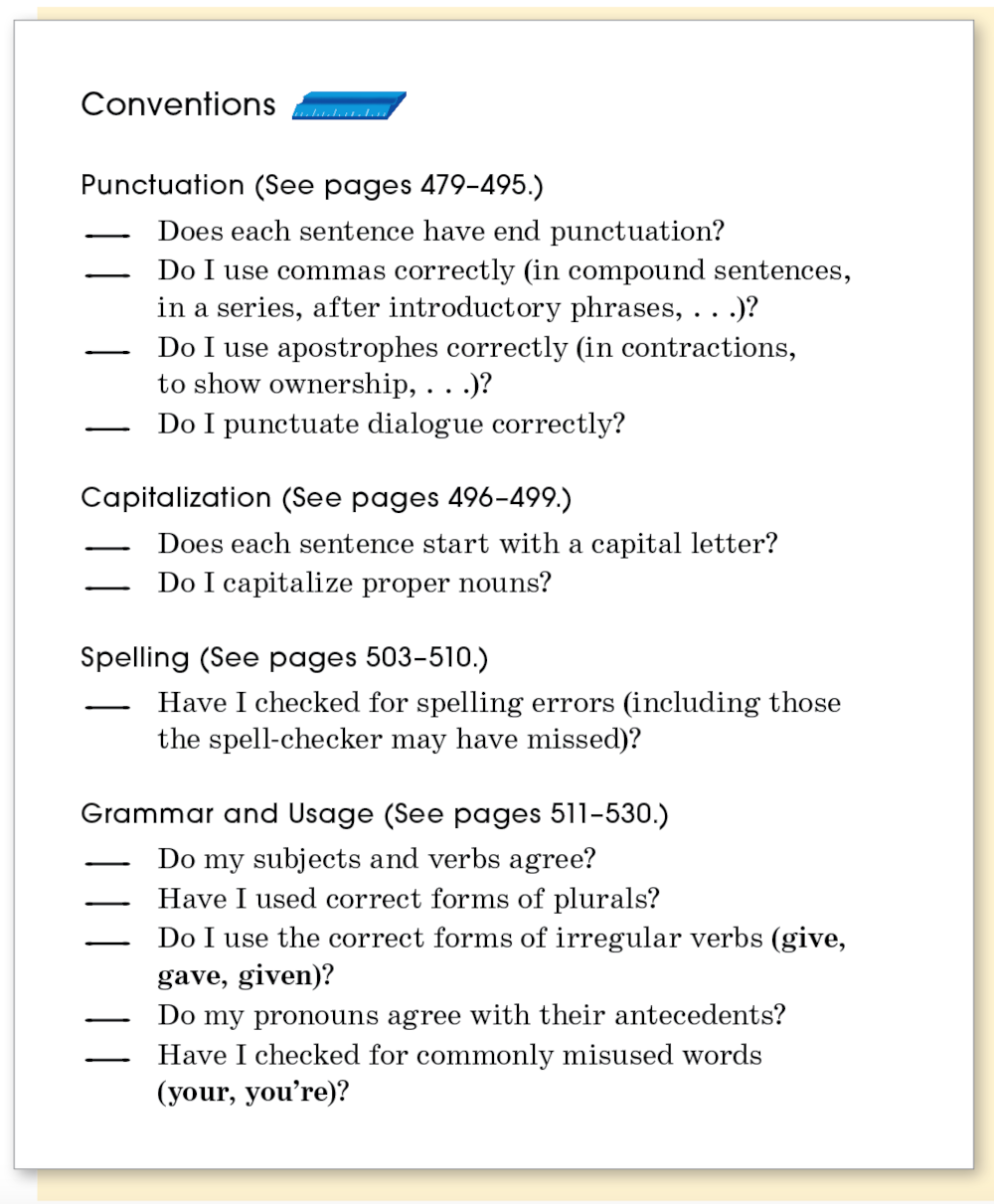WOC 059
Page 59

Editing
How can broccoli prevent communication? Stick a little between your front teeth, and no one will be able to focus on a thing you say.
An error in writing can be as distracting as a piece of broccoli wedged in incisors. The reader can’t focus on anything else. Consider this example:
I got only parshel credit for my essay.
What’s “parshel?” Does the writer mean “parcel?” What’s “parcel credit?” Or is it supposed to be “partial?”
So, before you publish your work, you’ll want to check it over closely. Look at each sentence, word, and punctuation mark. You’ll use a checklist to find and fix common errors. Editing your work gets rid of distracting mistakes, helping you communicate your ideas.
What’s Ahead
WOC 060
Page 60
Quick Guide ■ Editing

Editing helps you turn your revised writing into clear, accurate copy. You’re ready to edit once you . . .
- revise your first draft and
- create a clean copy of your revised writing.
Using a Checklist
An editing checklist focuses your attention on the common types of errors that you should look for and correct. (See page 64.)
First, closely read your writing, correcting any errors that you notice. Then go line by line through the checklist. When you can answer a question “yes,” check it off. Continue until you have checked each item.
Link to the Traits
Conventions ■
Carefully check your writing for punctuation, capitalization, spelling, and grammar.
Use the “Proofreader’s Guide” (pages 478–549) as you edit.
- Use the table of contents on page 478 to find general subjects, such as punctuation.
- Use the search function to find specific rules, such as commas.
WOC 061
Page 61
Editing in Action
When you edit, ask yourself the following questions. (See page 64 for a complete checklist.)
- Does each sentence have end punctuation?
- Does each sentence start with a capital letter?
- Have I checked for spelling errors?
- Have I checked commonly misused words (there, their, they’re)?
Marking Changes
The writer of the essay below used editing and proofreading marks to show where changes are needed.

WOC 062
Page 62
Common Mistakes
Here are common errors to check for when you edit.
1. Missing Comma in a Compound Sentence
Use a comma between two independent clauses (complete sentences) joined by a coordinating conjunction—and, but, or, nor, for, so, or yet. (See page 484.)

2. Comma Splices
Do not use a comma alone to join two independent clauses. (See page 484.)

3. Missing Commas in a Series
Use commas to separate three or more words, phrases, or clauses in a series. (See page 482.)

4. Misusing Its and It’s
Its is a possessive pronoun. It’s is a contraction of “it is” or “it has.” (See page 518.)

WOC 063
Page 63
5. Missing Apostrophe to Show Ownership
Use an apostrophe and s to show ownership. (See page 495.)

6. Sentence Fragment
In formal writing, each sentence must have a subject and a verb and express a complete thought. (See page 82.)

7. Missing Comma After Long Introductory Phrases
Place a comma after a long introductory phrase or phrases. (See page 484.)

8. Subject-Verb Agreement Errors
A verb must agree in number with its subject. A singular subject takes a singular verb, and a plural subject takes a plural verb. (See pages 84–85.)

WOC 064
Page 64
Editing
Use this editing checklist when you edit and proofread your writing. Also refer to “Common Mistakes” on pages 62–63 for other errors to watch for. Remember: You should carefully edit your writing only after you have revised it.
Editing Checklist
